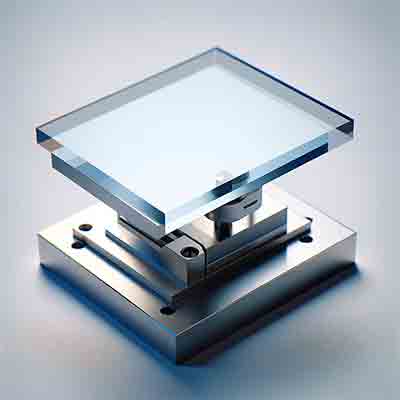We need a Zero Diffraction Plate for XRD sample: 15.9 mm Dia x 2.0 mm 1sp, Si Single Crystal.
Zero Background Sample Holders
Zero Diffraction Plate Sample
A PhD in Material Science requested the following quote:
Item HD38p
Zero Diffraction Plate for XRD with pocket
Material: CZ Silicon,
Diameter: 14.9±1.0 mm,
Thickness: 2000±50 µm,
Type/Dopant: p/Boron,
Resistivity: >10 Ohm-cm,
Surfaces: Single side polished / etched,
Flats: none, Edges: after laser cut,
Central pocket: no
Adequately SWS packed,
CTQ: Adequately oriented to guarantee zero background.
Reference # 278105 for specs and pricing.
Get Your Quote FAST! Or, Buy Online and Start Researching Today!
What Are Zero Background Sample Holders?
Zero Background Sample Holders are specialized tools used in X-ray diffraction (XRD) studies to hold and  analyze small or low-concentration samples. They are designed to minimize background noise in XRD patterns, which is especially important when dealing with samples that produce weak diffraction signals. The holders typically consist of a thin plate of a material like quartz or single crystal silicon, which has a very low or negligible diffraction pattern itself. This allows for more accurate and clear detection of the XRD signals from the sample being studied, as it reduces interference from the holder material. These holders are particularly useful in applications such as the analysis of thin films, nanomaterials, or biological samples.
analyze small or low-concentration samples. They are designed to minimize background noise in XRD patterns, which is especially important when dealing with samples that produce weak diffraction signals. The holders typically consist of a thin plate of a material like quartz or single crystal silicon, which has a very low or negligible diffraction pattern itself. This allows for more accurate and clear detection of the XRD signals from the sample being studied, as it reduces interference from the holder material. These holders are particularly useful in applications such as the analysis of thin films, nanomaterials, or biological samples.
Zero Background Sample Holders
The ZBH-32 is a zero background sample holder made from high purity aluminum. It is designed to hold a flat sample of powder, such as a standard. The sample is placed on the holder and the holder is placed in the diffractometer. The diffractometer takes an X-ray beam and sends it through the sample, then measures the intensity of the beam after it passes through the sample. There are many different techniques used to measure X-ray beams, but one of the most common is the use of a CCD camera. A CCD camera uses a grid of pixels to measure intensity of light that hits each pixel. The image below shows an example of an X-ray diffraction pattern taken using a ZBH. The image above shows two peaks: one at 2θ = 0.6 and another at 2θ = 36.5°. These are caused by reflections from planes in the crystal structure of silicon (Si). These reflections are known as Bragg peaks and they are used to determine the structure of Si and other materials. The ZBH-32 was designed with a large flat surface area on which to place the samples, allowing for much better
